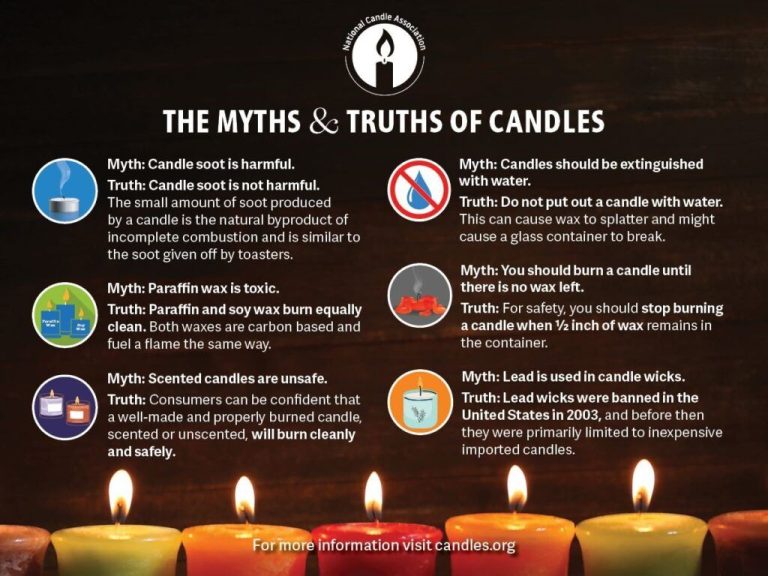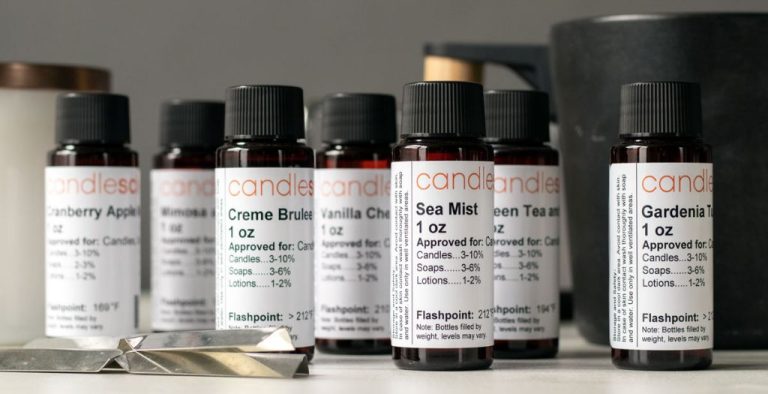Is It Safe To Burn A Candle In A Tin Can?
Dangers of Burning Candles in Tin Cans
Burning candles in tin cans poses several serious safety hazards that should not be overlooked. According to posts on Reddit (source), tin cans can quickly become hot enough to cause severe burns if touched. The thin metal conducts heat rapidly, heating to temperatures over 150°C in some cases. At these extreme temperatures, just brief skin contact will lead to irreversible burn damage in less than a second.
Old tin cans may be coated in paints, varnishes or linings that can release toxic fumes when burned. These chemical vapors can be hazardous to breathe in an enclosed space (source). Heating the metal walls too hot also risks explosion, as the pressure from steam and heat inside the sealed container builds up. The sharp edges of an old tin can present a further hazard of cuts if handled without care.
Why People Burn Candles in Tin Cans
Burning candles in tin cans has become a popular DIY craft and decor trend for several reasons. Many people are drawn to the creative and aesthetic appeal of a candle in a tin can. The metallic sheen and industrial look can add an interesting visual element to homemade candles. Tin cans are also extremely cheap, easy to find, and simple to repurpose into candle holders or lanterns [1]. This makes tin can candles one of the most affordable and accessible crafts to create at home.
Additionally, the sturdy tin material makes these types of candles convenient for outdoor use. The metal helps weatherproof and protect candle flames from wind and rain. This allows people to use tin can candles for lighting and ambiance in outdoor spaces like patios, porches, gardens, and campsites. The portability and durability provides versatility not found with glass or ceramic holders [2]. Overall, the creative possibilities, inexpensiveness, and functionality help explain the popularity of tin can candles despite potential safety issues.

Proper Safety Precautions
If you choose to burn a candle in a tin can, it’s important to take proper safety precautions. According to Craftserver.com, “Please handle with care & do not move tin while candle is burning or wax is hot. Protect surface it is placed on.”
First, only use a sturdy, clean tin can with no paint or coating that could release toxic fumes when heated. The can should have a flat, wide base so it’s stable while the candle is burning.
Always place the tin can candle on a heatproof surface away from anything flammable. Keep it on a nonflammable platter or baking sheet. Never put it directly on wood, plastic, or near curtains. According to Reddit users, candle warning labels often recommend keeping the surface under 125°F for metal containers.
While the candle is burning, monitor it closely and never leave it unattended. Trim the wick to 1/4 inch before lighting to prevent excess smoking and large flames. Extinguish the candle fully and allow the tin to cool completely before moving or touching it.
Finally, keep tin can candles away from children and pets. The metal gets very hot and could cause serious burns if touched accidentally while lit. Follow basic fire safety rules like having a lid or baking soda on hand to extinguish the flame if it gets out of control.
Alternative Safe Containers
There are a variety of alternative candle containers that are much safer than tin cans. Some good options include:
Glass Containers
Glass containers like mason jars are excellent candle vessels, as noted by https://www.lifenreflection.com/safe-candle-containers-for-candle-making/. Designed for canning and high heat preservation, mason jars can withstand temperatures up to 250°F without issue. Their smooth, nonporous surface won’t react with candle wax. Just make sure to use jars specifically rated for candles to avoid cracking or breaking.
Ceramic Containers
Properly glazed ceramic containers are also safe for candles, according to https://www.thesprucecrafts.com/choosing-safe-containers-for-candles-517255. Choose thick ceramic that won’t transfer heat too quickly. Make sure any decorative paints or finishes are high-temperature rated.
Metal Containers
Finally, opt for metal tins and containers specifically designed to hold candles. Look for pure tin or stainless steel rather than tin-plated steel. The metal should have a tight seal to contain melted wax. This prevents wax leaks and wick issues.
With the right glass, ceramic, or metal vessel, you can safely enjoy candles without resorting to risky tin cans.
Making Tin Can Candles Safer
While burning candles in tin cans does come with risks, there are some steps you can take to mitigate the dangers and make tin can candles safer to use:
Lining the inside of the can with aluminum foil can help reflect heat away from the metal sides and reduce the chance of the tin overheating or catching fire (1). Be sure to line not just the bottom but also the sides of the can.
Opting for shorter burn times of 2 hours or less can also lower the overall temperature exposure for the tin container (2). Avoid leaving tin can candles burning for prolonged periods.
Adding ventilation holes by puncturing the sides of the metal container allows more heat to escape and reduces the likelihood of overheating. Use a thumbtack or hammer and nail to add multiple holes along the sides before lighting the candle.
Using the candle with a candle warmer instead of an open flame further diminishes the fire risk by surrounding the tin with a protective electric heating element. The warmer applies heat indirectly to melt and release fragrance from the candle wax.
While taking precautions can reduce the hazards, burning candles in tin cans still comes with inherent risks. Using flammable wax and an open flame in a metal container may still overheat, catch fire, or explode. Proceed with caution.
Fire Safety Tips
Having working smoke detectors is one of the most important fire safety precautions you can take in your home. The Red Cross recommends installing smoke alarms on every level of your home, inside each bedroom, and outside sleeping areas. Test smoke detectors monthly and replace batteries at least once a year. Smoke detectors can alert you to a fire even when you are sleeping.
Keep the area around candles, fireplaces, space heaters and other ignition sources clear of combustible materials like paper, fabric, and dried leaves and flowers. Maintain at least 3 feet of clearance, as recommended by the Ready.gov Home Fires page. Avoid placing candles near windows, where curtains can blow over the flame and catch fire.
Having a fire extinguisher in your home, especially in the kitchen, can allow you to quickly put out small fires before they grow dangerous. Choose an “ABC” extinguisher designed for paper, grease, electrical and other common household fires. Familiarize yourself with how to use the extinguisher before an emergency occurs.
Practice a home fire escape plan regularly with everyone in your household. Identify two ways out of every room and a meeting place outside. Practice evacuating quickly and safely, as you may have less than two minutes to escape a home fire. Teach children what to do and never investigate fire or try to retrieve valuables or pets.
Warning Signs of Unsafe Can Candles
There are a few key warning signs to watch out for to tell if a candle in a tin can is unsafe:
Scorching or browning of the metal – This is a sign that the metal is overheating and can indicate the candle isn’t able to properly regulate its temperature (source). As the metal heats up, it can transfer more heat to the candle wax and flame leading to larger melt pools and higher flames.
Strong paint or chemical smell – Most tin cans are coated in a polymer lining or paint on the interior. These coatings can release toxic fumes or accelerate burning when heated to high temperatures by a large flame (source). Any strong paint or chemical odors are a warning sign.
Flame burning too high or dripping wax – A candle flame that is burning taller than 1 inch high or is causing the wax to quickly overflow the container is dangerous. This indicates the heat is not being regulated properly by the metal container (source).
Container feels very hot – If the metal tin is too hot to comfortably touch, the candle risks overheating the container. Tin is conductive and may transfer heat through the sides (source).
First Aid for Burns
If you or someone else suffers a burn from a tin can candle, it’s important to provide prompt first aid treatment. According to the NHS Inform website, the first step is to cool the burn with cool or lukewarm running water for 20 minutes – don’t use ice, iced water, or any creams or greasy substances. Allowing a moderate flow of water over the burn can help ease pain, reduce damage and swelling.
After cooling, the burn should be loosely covered with a sterile non-stick bandage or clean cloth. Secure the bandage in place, but avoid applying pressure. Over-the-counter pain medication like acetaminophen or ibuprofen can help manage pain. For more severe burns with blisters or that cover a large area, seek emergency medical attention. Severe burns require professional medical treatment to prevent infection, debride dead tissue, and assess the need for skin grafting.
It’s crucial to watch for signs of infection after a burn injury and keep the wound clean. Signs of infection include increased pain, redness, swelling, oozing, and fever. Seek prompt medical attention if infection is suspected, as antibiotics or surgical cleaning of the wound may be required.
Long-Term Health Risks
Burning a candle inside an old tin can poses some serious long-term health risks that should not be ignored. The most notable risks include respiratory issues, increased cancer risk, and carbon monoxide poisoning.
When a candle burns inside a tin can, it can reach high enough temperatures to burn off paints or coatings inside the can. These paints and coatings release toxic fumes that should never be inhaled. Breathing in paint fumes from burning tin cans can cause severe respiratory irritation or even long-term lung damage over time. It’s critical to only burn candles in containers confirmed to be 100% metal with no paints or coatings.
The smoke released from burning candles, especially scented candles, contains chemicals that may increase the risk of cancer when inhaled repeatedly over many years. Benzene and formaldehyde are two concerning chemicals found in candle smoke that are known carcinogens. Limiting exposure to candle smoke can help minimize cancer risk.
Finally, burning a candle in an enclosed space like a tin can uses up oxygen while releasing carbon monoxide. Prolonged exposure to carbon monoxide builds up in the blood and reduces the blood’s ability to carry oxygen. This can eventually lead to very serious health effects like organ damage. It’s essential to allow proper ventilation whenever burning candles to avoid carbon monoxide poisoning.
Considering these severe long-term health implications, it’s clearly risky behavior to burn candles in old tin cans. Always be sure to use proper, safe candle containers instead.
Summary
Burning candles in tin cans carries serious fire risks that shouldn’t be taken lightly. The metal conducts heat, making the tin hot to the touch, and the close quarters allow wax and flame to make direct contact with the tin walls. According to the U.S. Consumer Product Safety Commission, the candle’s high flame can ignite the wax and metal container, posing a major fire hazard.
To burn candles safely, the National Fire Protection Association recommends using sturdy, nonflammable candle holders specifically designed for candle use, avoiding materials like plastic or thin metal that can melt or scorch. Keep burning candles away from anything flammable and never leave them unattended. Have a safety plan to extinguish candles before going to sleep or leaving home.
For those who want the ambiance of tin can candles, make sure to line the inside with nonflammable materials like glass, stone, or ceramic. Monitor the candle closely and stop use if the metal exterior heats up. Only burn tin can candles for short durations. Using battery-operated flameless candles is the safest alternative.
In summary, exercise extreme caution with improvised tin candles, as they pose severe fire risks if not handled properly. Follow fire safety guidelines, prepare for emergencies, and consider safer candle holders or flameless options to enjoy candlelight without endangering yourself or your home.





